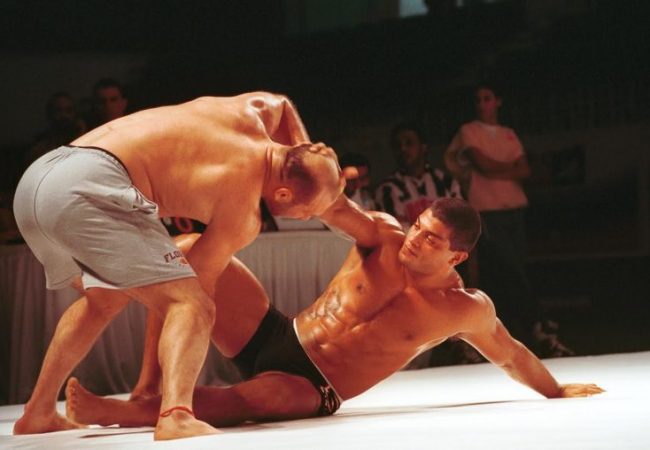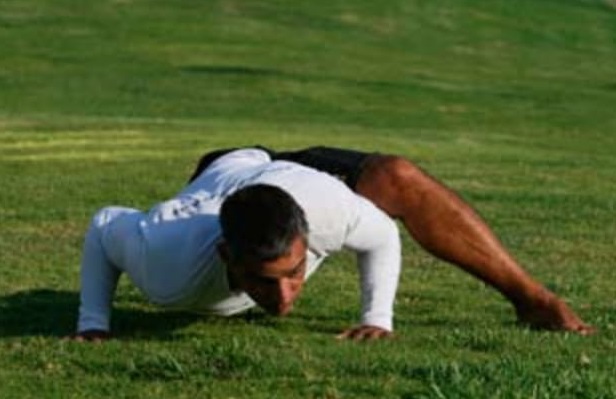[First published in 2009. Part of the Training for Warriors series, by Martin Rooney*]
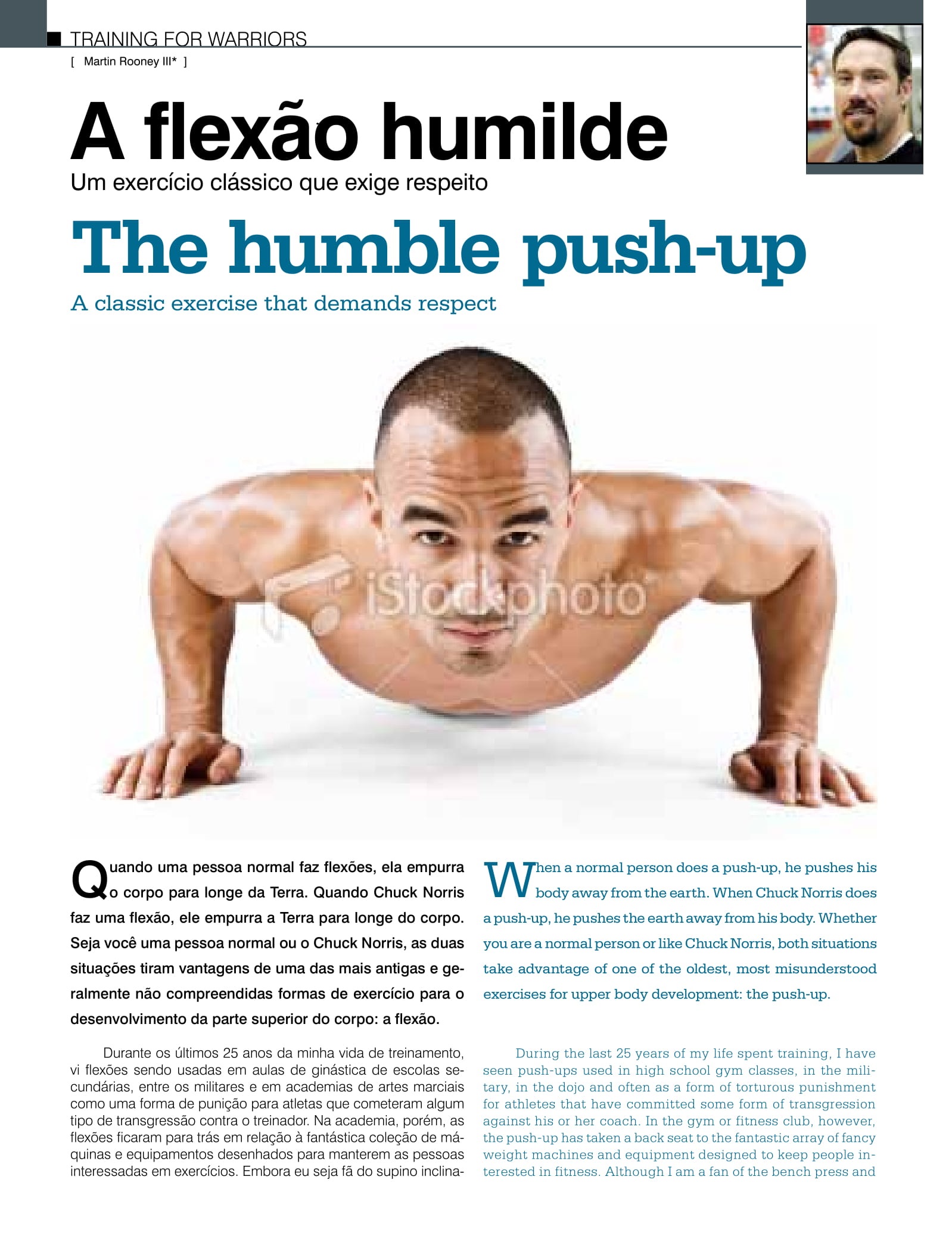
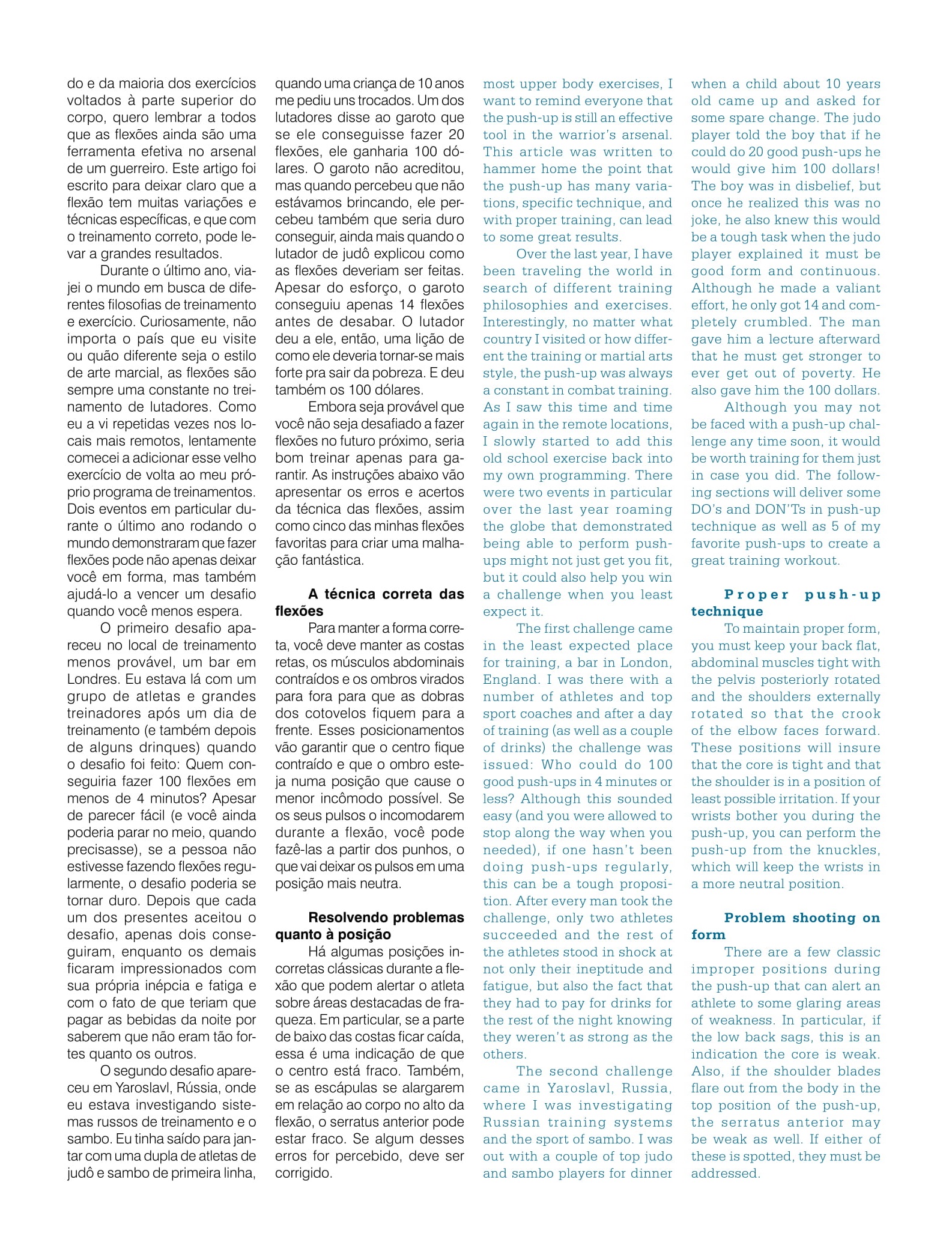
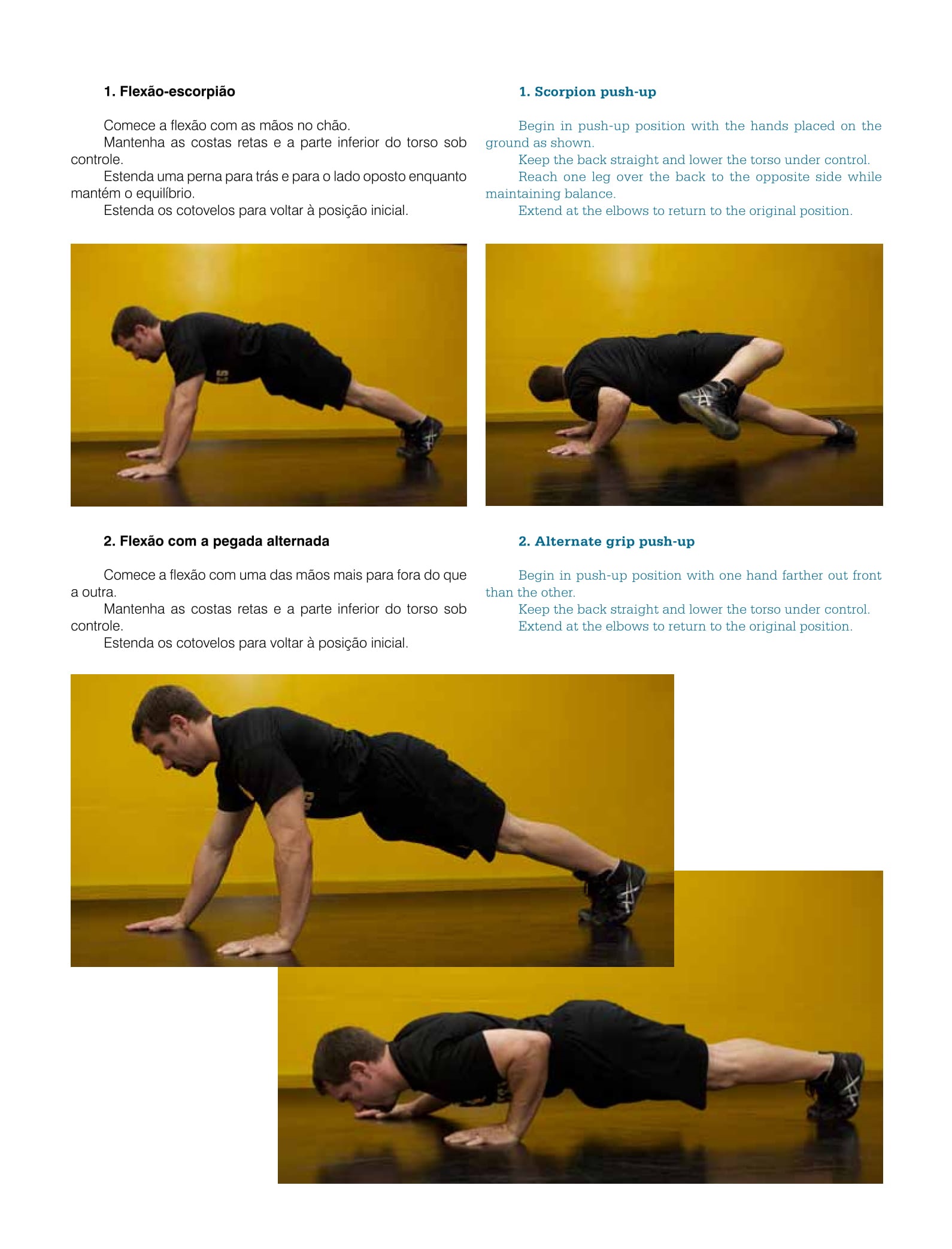
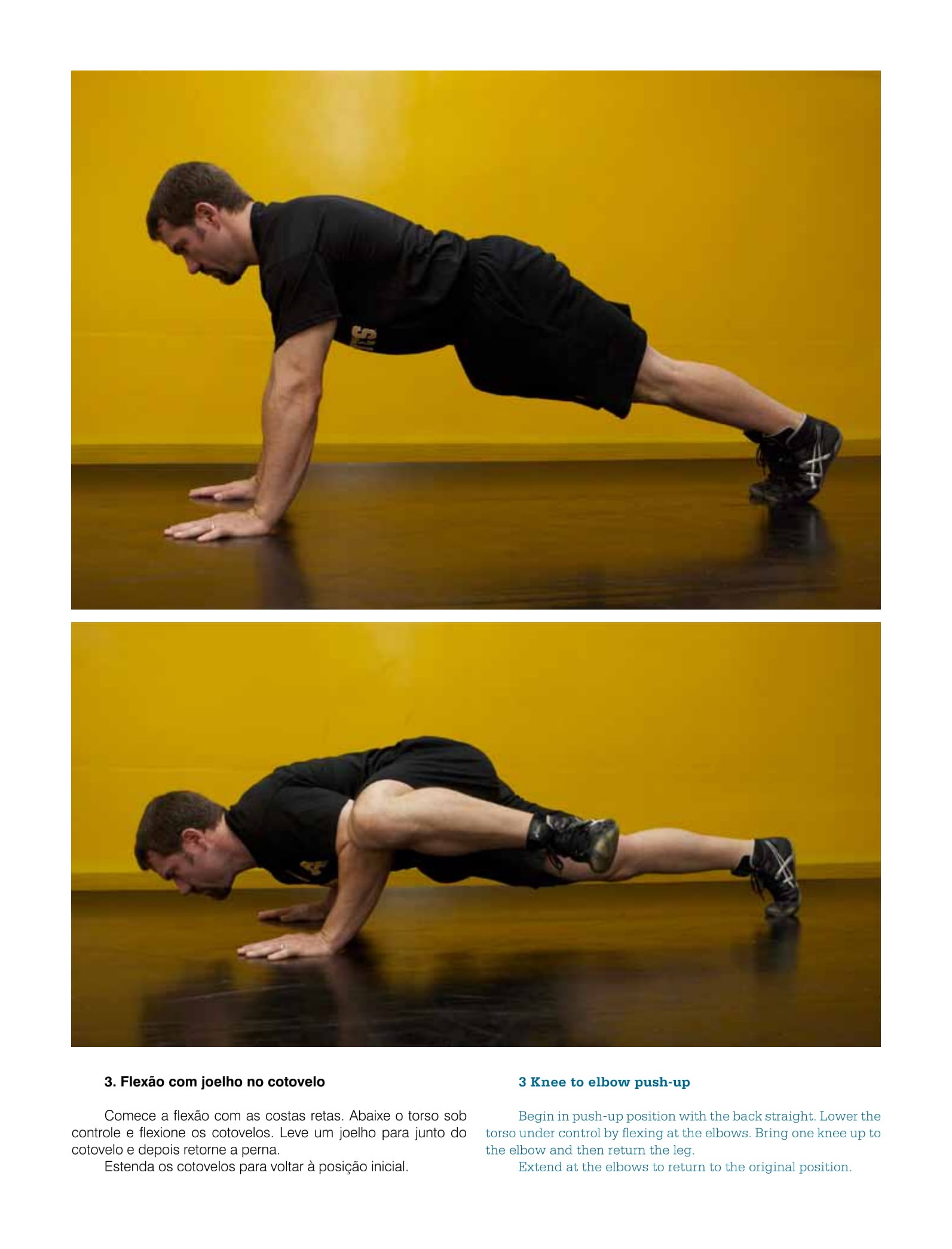
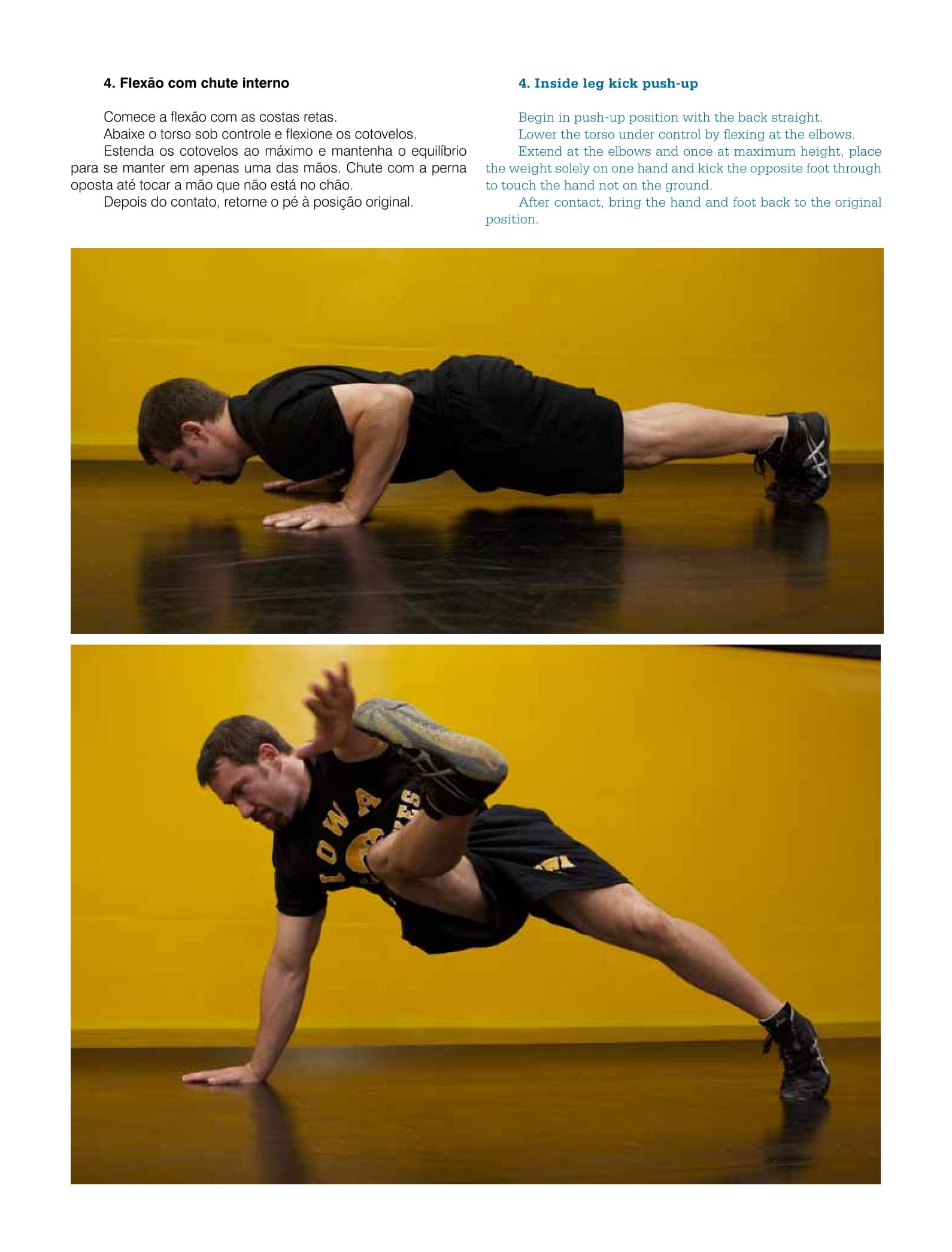

During the last 25 years of my life spent training, I have
seen push-ups used in high school gym classes, in the military, in the dojo and often as a form of torturous punishment
for athletes that have committed some form of transgression
against his or her coach. In the gym or fitness club, however,
the push-up has taken a back seat to the fantastic array of fancy
weight machines and equipment designed to keep people interested in fitness. Although I am a fan of the bench press and
most upper body exercises, I
want to remind everyone that
the push-up is still an effective
tool in the warrior’s arsenal.
This article was written to
hammer home the point that
the push-up has many variations, specific technique, and
with proper training, can lead
to some great results.
Over the last year, I have
been traveling the world in
search of different training
philosophies and exercises.
Interestingly, no matter what
country I visited or how different the training or martial arts
style, the push-up was always
a constant in combat training.
As I saw this time and time
again in the remote locations,
I slowly started to add this
old school exercise back into
my own programming. There
were two events in particular
over the last year roaming
the globe that demonstrated
being able to perform pushups might not just get you fit,
but it could also help you win
a challenge when you least
expect it.
The first challenge came
in the least expected place
for training, a bar in London,
England. I was there with a
number of athletes and top
sport coaches and after a day
of training (as well as a couple
of drinks) the challenge was
issued: Who could do 100
good push-ups in 4 minutes or
less? Although this sounded
easy (and you were allowed to
stop along the way when you
needed), if one hasn’t been
doing push-ups regularly,
this can be a tough proposition. After every man took the
challenge, only two athletes
succeeded and the rest of
the athletes stood in shock at
not only their ineptitude and
fatigue, but also the fact that
they had to pay for drinks for
the rest of the night knowing
they weren’t as strong as the
others.
The second challenge
came in Yaroslavl, Russia,
where I was investigating
Russian training systems
and the sport of sambo. I was
out with a couple of top judo
and sambo players for dinner
when a child about 10 years
old came up and asked for
some spare change. The judo
player told the boy that if he
could do 20 good push-ups he
would give him 100 dollars!
The boy was in disbelief, but
once he realized this was no
joke, he also knew this would
be a tough task when the judo
player explained it must be
good form and continuous.
Although he made a valiant
effort, he only got 14 and completely crumbled. The man
gave him a lecture afterward
that he must get stronger to
ever get out of poverty. He
also gave him the 100 dollars.
Although you may not
be faced with a push-up challenge any time soon, it would
be worth training for them just
in case you did. The following sections will deliver some
DO’s and DON’Ts in push-up
technique as well as 5 of my
favorite push-ups to create a
great training workout.
P r o p e r p u s h – u p
technique
To maintain proper form,
you must keep your back flat,
abdominal muscles tight with
the pelvis posteriorly rotated
and the shoulders externally
rotated so that the crook
of the elbow faces forward.
These positions will insure
that the core is tight and that
the shoulder is in a position of
least possible irritation. If your
wrists bother you during the
push-up, you can perform the
push-up from the knuckles,
which will keep the wrists in
a more neutral position.
Problem shooting on
form
There are a few classic
improper positions during
the push-up that can alert an
athlete to some glaring areas
of weakness. In particular, if
the low back sags, this is an
indication the core is weak.
Also, if the shoulder blades
flare out from the body in the
top position of the push-up,
the serratus anterior may
be weak as well. If either of
these is spotted, they must be
addressed.
1. Scorpion push-up
Begin in push-up position with the hands placed on the
ground as shown.
Keep the back straight and lower the torso under control.
Reach one leg over the back to the opposite side while
maintaining balance.
Extend at the elbows to return to the original position
2. Alternate grip push-up
Begin in push-up position with one hand farther out front
than the other.
Keep the back straight and lower the torso under control.
Extend at the elbows to return to the original position
3 Knee to elbow push-up
Begin in push-up position with the back straight. Lower the
torso under control by flexing at the elbows. Bring one knee up to
the elbow and then return the leg.
Extend at the elbows to return to the original position.
4. Inside leg kick push-up
Begin in push-up position with the back straight.
Lower the torso under control by flexing at the elbows.
Extend at the elbows and once at maximum height, place
the weight solely on one hand and kick the opposite foot through
to touch the hand not on the ground.
After contact, bring the hand and foot back to the original
position.
5. One-arm push-up
Begin in the one arm pushup position with the non-supporting hand held behind the
back and feet wide apart.
Keep the back straight and
lower the torso under control.
Extend at the elbows to
return to the original position.
The push-up workout
Perform all 5 of these pushups for 20 repetitions apiece for a
total of 100 push-ups. For every
push-up, perform 10 repetitions
on each side. Repeat this workout two times per week for one
month to inject push-up training
back into your workout. For the
first week, rest 1 minute and 30
seconds after each set. For the
second week, rest only 1 minute
after each set. For the final two
weeks, attempt to perform the
100 push-ups in as short a time
as possible. Record your score.
I took the original 100
push-ups in 4 minutes challenge
and got 97 and ran out of gas.
After training for a few weeks I
was up to 120 in 4 minutes and
I have since added push-ups
to my routine two times per
week. The soreness that lasted
for almost a week after that first
challenge delivered two huge
lessons for me. First, that the
lowly push-up is still a powerful
tool and second, we must first
master the best piece of exercise equipment we were ever
given: our body. It is your time,
warriors, to create your own
challenge. Now get to work!
* Martin Rooney is the founder of the Training for Warriors system and has trained champion fighters for the UFC, Pride, ADCC and Olympics. His TFW fitness program is used in over 175 facilities in 25 countries around the world. Information about TFW certifications at trainingforwarriors.com.




